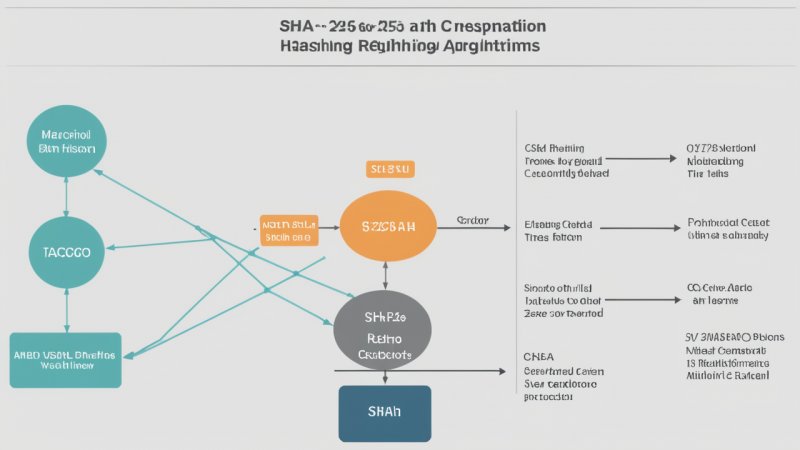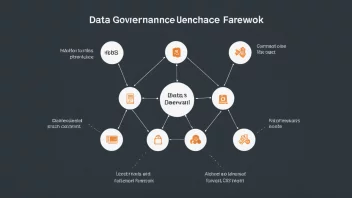Cryptographic hashing algorithms play a vital role in ensuring data integrity, security, and authenticity in various applications, including blockchain technology and password storage. Two of the most prominent hashing algorithms are SHA-256 and SHA-3. In this article, we will compare these two algorithms, examining their strengths, weaknesses, and applications to help you understand which might be more suitable for your specific use case.
What is SHA-256?
SHA-256 (Secure Hash Algorithm 256-bit) is part of the SHA-2 family, designed by the National Security Agency (NSA) in the United States. It produces a fixed-size 256-bit (32-byte) hash value and is widely used in various applications, particularly in blockchain technology, where it forms the basis for Bitcoin's security model.
What is SHA-3?
SHA-3 (Secure Hash Algorithm 3) is the latest member of the Secure Hash Algorithm family, standardized by the National Institute of Standards and Technology (NIST) in 2015. It is based on a different construction principle called the Keccak sponge construction and can produce hash values of varying lengths, including 224, 256, 384, and 512 bits.
Performance Comparison
When comparing SHA-256 and SHA-3, performance is a crucial factor to consider, particularly in environments where speed and resource efficiency matter.
Speed
SHA-256 is generally faster on most platforms, especially on hardware that is optimized for it. This speed advantage is particularly noticeable in applications such as cryptocurrency mining and blockchain transactions, where rapid hashing is essential.
SHA-3, while slightly slower in most cases, is designed for flexibility and offers a range of output sizes. This can be beneficial in applications requiring different hash lengths, but it may not match the speed of SHA-256 in situations where performance is critical.
Resource Efficiency
SHA-256 is efficient in terms of memory usage and performance, making it suitable for constrained environments. Conversely, SHA-3 can be more resource-intensive due to its more complex design, which may require more memory and processing power.
Security Analysis
Security is paramount when choosing a hashing algorithm, especially in fields like blockchain and data integrity.
Collisions
A collision occurs when two different inputs produce the same hash output. SHA-256 has been proven secure against known collision attacks, and no practical vulnerabilities have been identified. SHA-3, on the other hand, was designed with the lessons learned from SHA-1 and SHA-2 in mind, making it resistant to many potential vulnerabilities that could threaten SHA-256 in the future.
Resistance to Attacks
Both SHA-256 and SHA-3 exhibit strong resistance to preimage and second preimage attacks, making them suitable for applications requiring high security. However, SHA-3's different construction offers potential advantages in resisting future cryptographic attacks.
Applications
Understanding the applications of each hashing algorithm can provide insight into their practical use and effectiveness.
SHA-256 Applications
- Cryptocurrency: Used in Bitcoin and many other cryptocurrencies for securing transactions.
- Digital Signatures: Essential in various digital signature schemes to ensure the integrity and authenticity of documents.
- Data Integrity: Employed in file integrity verification systems.
SHA-3 Applications
- Cryptographic Security: Used for securing digital communications and data storage.
- Random Number Generation: Can be utilized in cryptographic random number generators.
- Blockchain: Some newer blockchain systems are beginning to adopt SHA-3 for its flexibility and security features.
Pros and Cons
SHA-256 Pros
- High speed and performance efficiency.
- Widely adopted and trusted in existing systems.
- Strong security properties with no known vulnerabilities.
SHA-256 Cons
- Limited to 256-bit output; no flexibility in hash length.
- Potential for future vulnerabilities as computational power increases.
SHA-3 Pros
- Flexible output sizes and strong security properties.
- Designed to withstand future cryptographic attacks.
- Innovative construction method (Keccak) offers unique advantages.
SHA-3 Cons
- Generally slower than SHA-256 on most platforms.
- More resource-intensive, which can be a drawback in constrained environments.
Conclusion
Both SHA-256 and SHA-3 have their unique strengths and weaknesses, making them suitable for different applications. SHA-256 remains the go-to choice for established systems, particularly in blockchain technology due to its speed and efficiency. However, SHA-3's flexible output sizes and advanced security features make it an appealing option for future-proofing cryptographic applications. When deciding between the two, it is essential to consider the specific requirements of your project, including speed, resource availability, and security needs.






